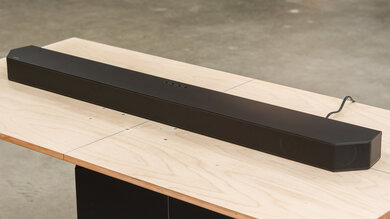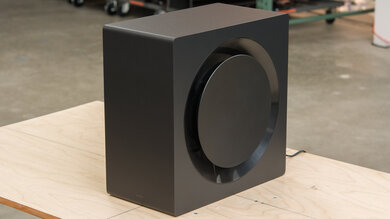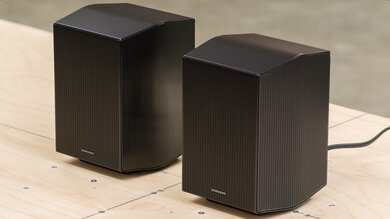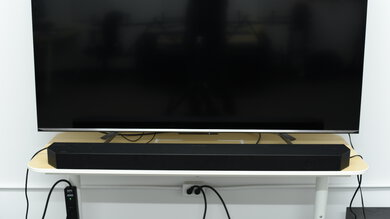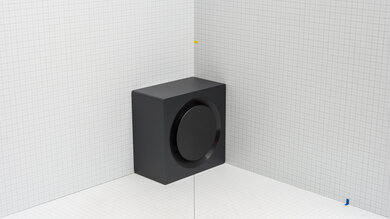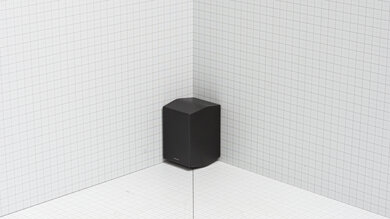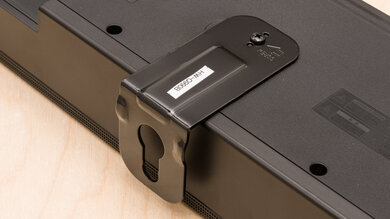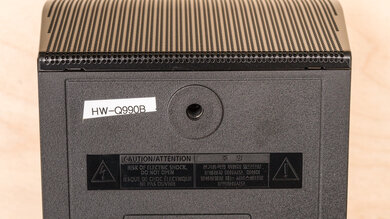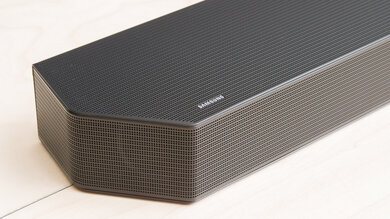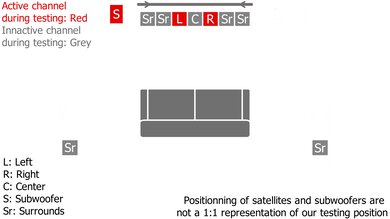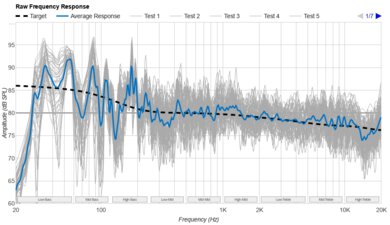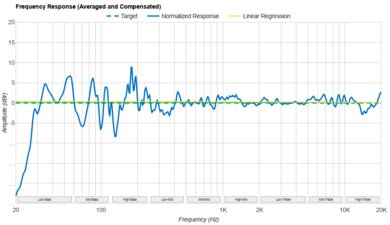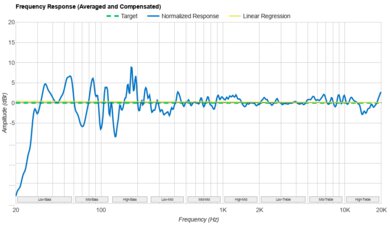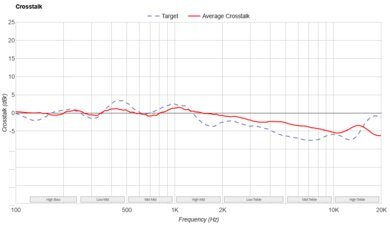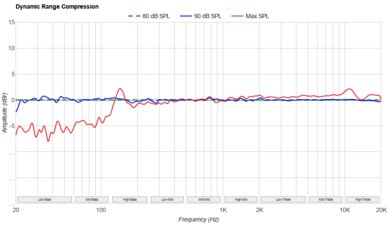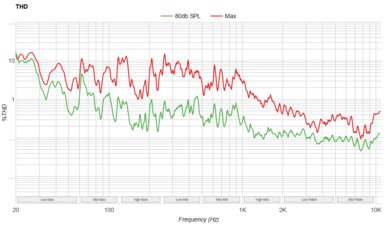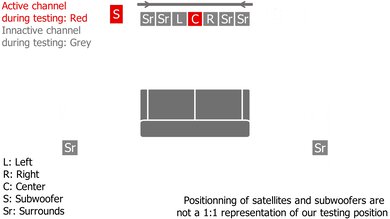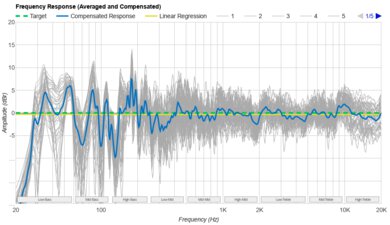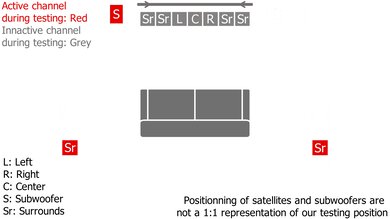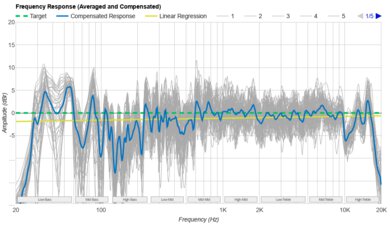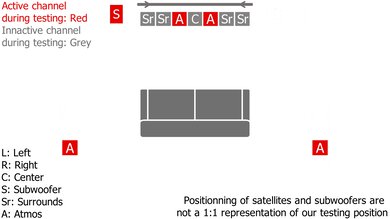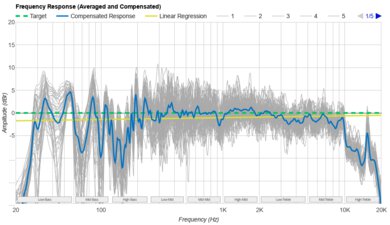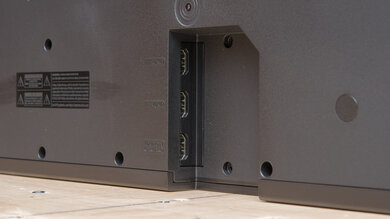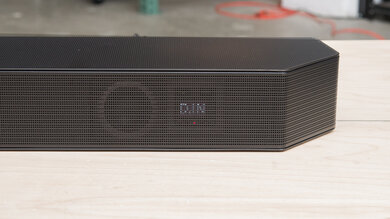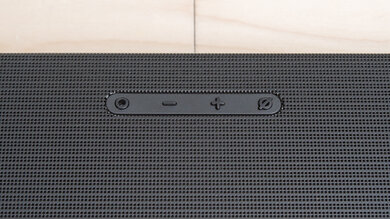The JBL Bar 9.1 is an impressive 5.1.4 setup. It has two detachable satellite speakers that can play your favorite audio wirelessly from anywhere in your room. Although we don't currently test for it, the satellites are advertised as having up to ten hours of continuous playback time and charge when reconnected to the bar or by micro-USB. There's also a subwoofer, which helps to give this bar a bit more thump and punch. The rest of the sound profile is very balanced, making it a good choice for any kind of content, from audiobooks to action flicks. It even has a full range of physical inputs so it supports Atmos and DTS, and there are several ways to connect to it wirelessly.
Our Verdict
The JBL Bar 9.1 is great for mixed use. It has a balanced sound profile right out-of-the-box with just a touch of extra bass, thanks to its subwoofer. Its detachable satellites also help to create a more immersive listening experience, whether you're listening to music or movies. While it can get loud enough for a large or crowded room, there's some compression at max volume. Still, it can reproduce dialogue clearly and accurately, and you can stream podcasts or audiobooks directly to the bar via a variety of wireless connections.
- Well-balanced sound profile.
- Can get loud.
- Supports Atmos for an immersive experience.
- Completely wireless subs can play audio while charging.
- No graphic EQ and limited EQ presets.
The JBL Bar 9.1 is great for dialogue and TV shows. While it doesn't have a dialogue enhancement feature, it has a neutral sound profile capable of producing clear and accurate dialogue. It also has a lot of wireless connectivity options including Bluetooth, Wi-Fi, Chromecast built-in, and Apple AirPlay, so you can stream your favorite podcasts directly to the bar.
- Well-balanced sound profile.
- Full wireless connectivity options.
- Completely wireless subs can play audio while charging.
- No dialogue enhancement feature.
The JBL Bar 9.1 is very good for music. It has a balanced sound profile that, thanks to its subwoofer, packs a bit of bass. While it has limited sound enhancement features and there's no specific music EQ preset, you can still adjust the subwoofer level. Still, this bar can get loud enough to fill a large room or a crowded environment like a house party, although there's some compression at max volume. There's also a room correction feature that can further improve audio reproduction to fit the room you're in.
- Well-balanced sound profile.
- Can get loud.
- Completely wireless subs can play audio while charging.
- No graphic EQ and limited EQ presets.
The JBL Bar 9.1 is impressive for movies. It has a well-balanced sound profile with a touch of bass, so you're able to better feel each explosion in an action movie, and it can get loud enough to fill a large room. Its satellites also help to create a more immersive experience, especially for Atmos content, and it has excellent surround performance as well. That being said, this soundbar doesn't have many sound enhancement features like a graphic EQ, which some users may find limiting. There's also some compression at max volume.
- Well-balanced sound profile.
- Can get loud.
- Supports Atmos for an immersive experience.
- Completely wireless subs can play audio while charging.
- No graphic EQ and limited EQ presets.
Changelog
- Updated Sep 05, 2024: We've updated this review to indicate that 'Night Mode' might only be available in North American variants of this soundbar.
- Updated Jun 07, 2023: Converted to Test Bench 1.2. Updated the results for audio format support via ARC/eARC, HDMI In, and Optical. Added Video Passthrough to TV results as well.
- Updated May 11, 2023: Added market comparison with the JBL Bar 1300X in the Sound Enhancement Features box.
- Updated Mar 21, 2023: Added a market comparison to the JBL Bar 1000 in the Style - Satellites box.
Check Price
Popular Soundbar Comparisons
The JBL Bar 9.1 is an impressive 5.1.4 channel setup. It has two unique detachable satellites that are also truly wireless, so you can remove them from the sides of the soundbar and place them anywhere in the room. It also has a very balanced and neutral sound profile making it well-suited for a variety of audio content, and its surround performance rivals that of the Samsung HW-Q90R or the Vizio SB46514-F6.
If you're looking for more soundbars, check out our recommendations for the best Dolby Atmos soundbars, the best soundbars 5.1, and the best soundbars for movies.
The JBL Bar 1000 is a touch better than the JBL Bar 9.1 overall. The 1000 is a newer model with some extra features, including Spotify Connect support. Unlike the 9.1, it has a dialogue enhancement tool and two extra HDMI In ports. Sound-wise, there isn't much difference between these bars, even though the 1000 comes with two extra surround channels. They both upmix stereo content, but the 9.1 has better focus, so sound effects are more accurately localized within the soundstage.
The JBL Bar 9.1 is a better soundbar than the Sonos Arc. The JBL has a dedicated subwoofer and satellites, which reproduce a more extended low-bass and a better surround performance. It also comes with EQ presets and a Full HDMI In port. However, you can also upgrade the Sonos to the Sonos Arc with Sub + One SL Speakers or the Sonos Ultimate Immersive Set with Arc for better performance.
The JBL Bar 9.1 is better than the standalone Bose Smart Soundbar 900. The JBL comes with a dedicated sub and satellites. It has a better surrounds performance and reproduces a more extended low-bass. That said, the Bose is better built, with built-in voice assistant capabilities. You can also upgrade it with a Bose Bass Module and Surround Speakers for better performance.
JBL Bar 9.1 is a better soundbar than the Vizio Elevate. The JBL has a somewhat more balanced default sound profile, so it's suitable for a wider variety of audio content. It also offers better center channel and surround performance, though both bars have a similarly wide soundstage. It also has a room correction feature and is compatible with Apple AirPlay, unlike the Vizio. The Vizio comes with more sound enhancement options, like bass and treble adjustment and a dialogue enhancement mode.
Test Results


